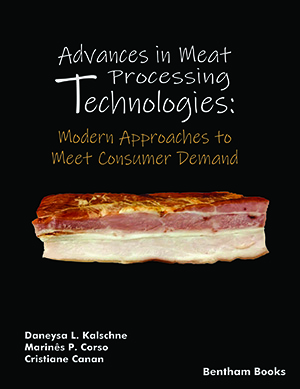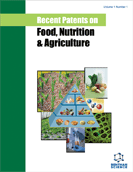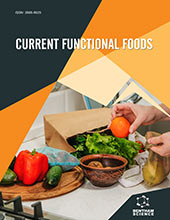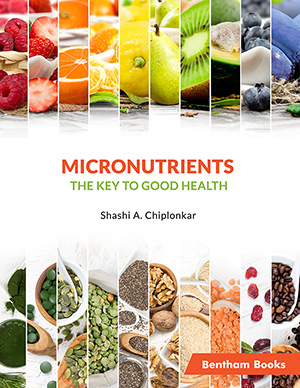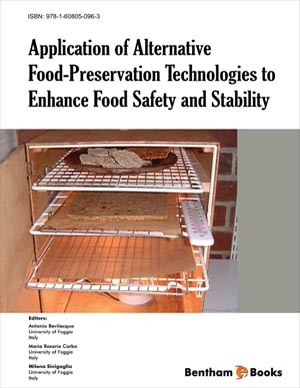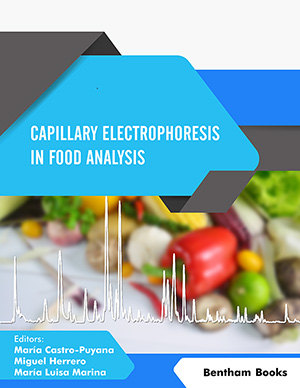Preface
Page: ii-ii (1)
Author: Daneysa L. Kalschne, Marinês P. Corso and Cristiane Canan
DOI: 10.2174/9789811470196120010002
Acknowledgement
Page: iii-iii (1)
Author: Daneysa L. Kalschne, Marinês P. Corso and Cristiane Canan
DOI: 10.2174/9789811470196120010003
The Meat Industrialization Scenario: Production, Consumption, and Product Changes Driven by Consumers
Page: 1-7 (7)
Author: Daneysa L. Kalschne, Marinês P. Corso and Cristiane Canan
DOI: 10.2174/9789811470196120010004
PDF Price: $15
Abstract
Meat is consumed worldwide and from ancient times to the present day, the development of meat products and processes has been driven by meat consumers. Beef, pork and poultry are the most common varieties of meat preferred for human consumption and the emergence of meat processing industrialization has allowed the use of the entire carcass, the development of different products, and microbiological safety due to advances in the technology used. Meat consumers have been driving production trends for meat products that aim at acceptable nutritional, physicochemical, microbiological and sensory characteristics of the final product. In this context, the development of emerging technologies for meat industrialization aims at improving conventional processes, offering new and suitable solutions to the meat industry to meet consumer demand.
Dry Fermentation Technology
Page: 8-25 (18)
Author: Daneysa L. Kalschne, Marinês P. Corso and Cristiane Canan
DOI: 10.2174/9789811470196120010005
PDF Price: $15
Abstract
The technology of the production of dry-fermented products is old and even in current days these meat products are produced, appreciated and consumed worldwide. The fermentation and drying steps are responsible for chemical and biochemical transformations that ensure the final characteristics of the product were reached. One of the disadvantages in dry-fermented product processing is the time required for all transformations that characterize the product and meets the required standard of safety and quality. Thus, the use of emerging technologies allows the improvement in the production process considering the use of new approaches, always ensuring food safety and quality. In this chapter, the ultrasound, pulsed UV light and QDS process® are discussed. The approach includes the advantages and disadvantages of each technology, the report of researchers describing the use of mentioned technologies and the most probable mechanisms associated with the effects.
Meat Emulsion Technology
Page: 26-43 (18)
Author: Daneysa L. Kalschne, Marinês P. Corso and Cristiane Canan
DOI: 10.2174/9789811470196120010006
PDF Price: $15
Abstract
The technology of the production of dry-fermented products is old and even in current days these meat products are produced, appreciated and consumed worldwide. The fermentation and drying steps are responsible for chemical and biochemical transformations that ensure the final characteristics of the product were reached. One of the disadvantages in dry-fermented product processing is the time required for all transformations that characterize the product and meets the required standard of safety and quality. Thus, the use of emerging technologies allows the improvement in the production process considering the use of new approaches, always ensuring food safety and quality. In this chapter, the ultrasound, pulsed UV light and QDS process® are discussed. The approach includes the advantages and disadvantages of each technology, the report of researchers describing the use of mentioned technologies and the most probable mechanisms associated with the effects.
Meat Curing and Preservation Methods
Page: 44-58 (15)
Author: Daneysa L. Kalschne, Marinês P. Corso and Cristiane Canan
DOI: 10.2174/9789811470196120010007
PDF Price: $15
Abstract
Salting is one of the oldest food preserving methods. New salting methods for meat products are currently being studied aiming at reducing process time and labour costs, increasing process yield, and producing safe, low-salt content foods with acceptable sensory characteristics. In this context, ultrasound, high hydrostatic pressure and microwave technologies have been highlighted. Several manuscripts have addressed this theme and the results were satisfactory, urging the need for further studies in order to improve and enable the use of such methods. This chapter will cover traditional salting methods and new ones, currently being discussed aiming at improving the quality and yield of products.
Marinating and Meat Restructuring Technology
Page: 59-74 (16)
Author: Daneysa L. Kalschne, Marinês P. Corso and Cristiane Canan
DOI: 10.2174/9789811470196120010008
PDF Price: $15
Abstract
Meat products such as marinated meats, hamburgers, and nuggets are well accepted by consumers looking for convenience in preparing their meals. These products possess characteristics such as tenderness, juiciness, diversity of flavors, high yield, and also add value to hard-to-sell meats. This chapter will discuss the traditional and innovative meat-producing methods, also called green technologies, currently aimed at making meat products safer, of higher quality, also reducing production costs. Green technologies use either physical, chemical, or biological methods enabling them to perform the same productive tasks more efficiently due to lower electrical power, chemical, and water consumption as well as wastewater production.
Non-emulsified Sausage Processing Technology
Page: 75-84 (10)
Author: Daneysa L. Kalschne, Marinês P. Corso and Cristiane Canan
DOI: 10.2174/9789811470196120010009
PDF Price: $15
Abstract
Non-emulsified sausages represent a wide group of processed meat products with peculiar characteristics depending on the region of production. In general, they are recognized as thick dough sausage products, stuffing and commercialized in a fresh way, or submitted to smoking or cooking. The fresh non-emulsified sausages are a highly perishable food that cannot be submitted a previous heat treatment before the sale, once the consumer will bake it in the consumption moment. In this context, the high hydrostatic pressure and irradiation are of great interest because only a slight increase in the temperature was observed during the processing step, and can be applied in the finally sealed packages, avoiding re-contamination. Furthermore, for cooked non-emulsified products, the number of possibilities for alternative technologies employment is greater. The high hydrostatic pressure and irradiation can be applied for microbial reduction after cooking step already in the package, and the alternative heating technologies such as ohmic heating, microwave, and radiofrequency can be tested in order to replace the conventional cooking procedures improving the microbiological safety. Thus, the use of emerging technologies represents an interesting point of view in the processing of non-emulsified products, justifying the proper attention of further studies.
Effect of Ultrasound on Fresh Meat Tenderness
Page: 85-100 (16)
Author: Daneysa L. Kalschne, Marinês P. Corso and Cristiane Canan
DOI: 10.2174/9789811470196120010010
PDF Price: $15
Abstract
Ultrasound is considered a “green technology” based on acoustic energy. It is a mechanical, nonionizing, and nonpolluting technology that contributes to the improvement of numerous food industry processes. Several articles published in recent years have reported the effects of ultrasound on beef tenderness. Therefore, we have chosen to write this chapter as we believe that the use of ultrasound could assist the industry to establish effective and efficient processing conditions to improve meat quality and meet consumer demands. In this context, the effect of ultrasound on beef tenderness should be addressed, especially as beef is less tender than poultry, pork and lamb meat.
Botton-up and Top-down Strategies for Processing Meat Analogs
Page: 101-112 (12)
Author: Daneysa L. Kalschne, Marinês P. Corso and Cristiane Canan
DOI: 10.2174/9789811470196120010011
PDF Price: $15
Abstract
There is a worldwide concern regarding the supply of protein source for both human food and animal feed. In this context, meat has a major impact on the environment and consumers and health professionals have been expressing growing concern over high meat consumption. In this respect, meat analogue products - defined as compounds structurally similar to meat, however, differing in composition - have been attracting ever-increasing attention and interest of the environment and health concerned consumers. Furthermore, the number of people identifying as vegetarian and vegan have been increasing as they look for more sustainable options due to a unique lifestyle. In this chapter, the main aspects of bottom-up and top-down strategies are presented and discussed. The literature describes different approaches to simulate animal meat, such as cell culturing, mycoprotein and spinning techniques (bottom-up strategies) extrusion, proteins and metal-cation-precipitated polysaccharides, freeze structuring and shear cells technology (top-down strategies). Meat analogues have to present typical sensory and nutritional properties of animal meat for both vegetarian and non-vegetarian consumers. Thus, food scientists ought to test texturization techniques, develop more industrialized meat analogue products, evaluate the scalability of production process and quality control of meat analogues, improving the existing technologies and developing new ones that meet consumer demands.
Alternative Additives and Ingredients
Page: 113-126 (14)
Author: Daneysa L. Kalschne, Marinês P. Corso and Cristiane Canan
DOI: 10.2174/9789811470196120010012
PDF Price: $15
Abstract
Meat products conventionally contain fat, saturated fatty acids, and high salt contents, as well as health-harming chemical additives, such as nitrites and synthetic anti-oxidants. The meat industry has been striving to find alternatives in order to meet consumer demands for healthier products, either reduced or free of such components. For this purpose, various studies have been carried out for alternative ingredients. Vegetable oils have achieved positive results as fat replacers. Methods such as preemulsion, emulsion-templated, microencapsulation, and oleogel formation (hydrogel or organogel) have been excellent on partial pork fat reduction, and consequently saturated fatty acids or n-3 PUFA-rich oils incorporation. Plant materials are seen as a good alternative for synthetic anti-oxidants. Various plant derivatives have been tested and presented anti-oxidant potential due to their bioactive contents, such as phenolic acids, phenolic diterpenes, flavonoids, and volatile oils. Other salts, especially potassium chloride, have stood out on replacing sodium chloride. The use of natural sources of either nitrites or nitrates, such as celery and powdered vegetable juice, has been suggested as their replacers, as well as the use of different compounds with potential natural food preservative characteristics. Overall, considerable progress has been made over the past few years in the field of non-meat ingredients as alternative to conventional ones, conferring a healthier approach to meat products. However, overall strategic approaches to meet one or more simultaneous demands, such as fat and salt reduction, among others, in terms of sensory, technological and microbiological efficiency ought to be encouraged.
Subject Index
Page: 127-137 (11)
Author: Daneysa L. Kalschne, Marinês P. Corso and Cristiane Canan
DOI: 10.2174/9789811470196120010013
Introduction
Meat and meat-based products play an important role as foods in the diets of people around the world. However, environmental and social issues have posed a challenge to meat production processing plants, with the advent of more consumer conscious production values across the food processing industry and a changing attitude among some communities towards the consumption of products from animal origin. The development of meat science and technology has brought solutions that allow the consumption of meat in a greater proportion from the source. Traditional processes such as salting, smoking, and fermentation have been refined, and, more recently, processes such as emulsification, marinating, and tenderizing of meat, have further diversified meat products. Meat processing technology is also required to meet consumer expectations and demands for nutritious and safe food. Consumer requirements have pushed for need for adaptation and modernization of slaughterhouses, as well as the use of more suitable processing technologies for saving water, energy, and reducing waste production, all while trying to provide a high level of nutritional, sensory, and food-safety for consumers. Advances in Meat Processing Technologies aims to inform students, researchers, lecturers and others who are interested in the subject, about new meat and meat-based product processing technologies. The handbook covers a variety of meat processing technologies including dry fermentation, meat emulsification, curing, marinating, restructuring and processing of non-emulsified meat and meat analogues. Additional chapters cover the use of additives and ultrasound technology in meat processing as well as different strategies suitable for meat processing operations. The simple, topical presentation of the book, which covers a wide variety of products makes the book a key reference for informing students, researchers, lecturers, professionals and general readers who are interested in the subject of meat processing technology.


